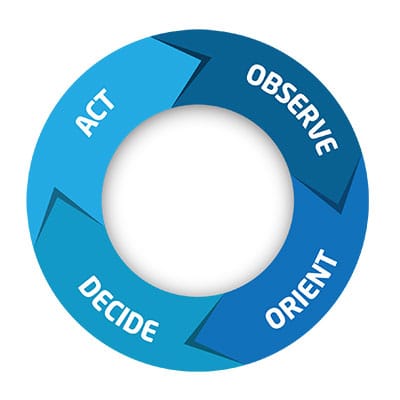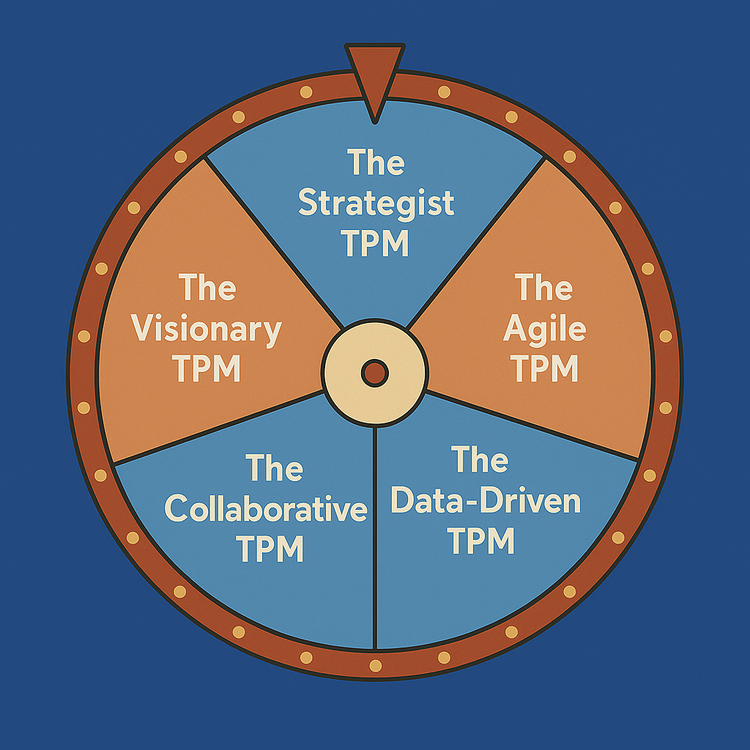How TPMs Can Stay Calm Under Pressure Mental Models That Work

As a Technical Program Manager, I often operate at the intersection of chaos and clarity, more often between rock street and hard place avenue. But we are the connective tissue between engineering, product, business, and operations—each with its own environment, language, and priorities. In these high-stakes environments, staying calm isn’t just a nice-to-have—it’s a leadership imperative. You need to project outward calm while also internally being able to keep cool to make rational and calculated decisions.
But how do the best TPMs maintain their composure when production goes down, a senior executive demands an immediate update, or conflicting priorities threaten delivery timelines?
The answer lies in applying mental models—structured ways of thinking that bring clarity and stability under pressure.
Being Calm Is Contagious
“Calm is a superpower.” — Chris Voss, former FBI negotiator
When a TPM stays calm, it does more than stabilize his or her own decision-making. It signals to the rest of the team that someone is in control. It creates psychological safety, allowing engineers and stakeholders to focus on solutions instead of spiraling in uncertainty.
I recall a large-scale cloud migration project I was at where we had a misconfigured IAM policy and that blocked access to many micro-services it relied on, about two days before launch-day. Facing a Go-No-Go call, I initiated a war room with stressed engineers and panicking leaders. I can even remember the initial war room call lasting a continuous 6 hours. So I muted my Microsoft Teams app for 20 minutes, did some mindful meditation which allowed me to anchor myself on the next steps, providing me with clarity to set a plan and get the service up and running by the end of the evening.
1. OODA Loop
There is a technique I came across later called the OODA Loop, originally developed by U.S. Air Force Colonel John Boyd. The framework helps me respond quickly without over-reacting by:
- [O]bserving: What’s the situation right now? Gather facts, not fears.
- [O]rienting: How does this align with what you know (systems, team capabilities, priorities)?
- [D]eciding: Choose a course of action based on the data, not emotion.
- [A]cting: Execute, then loop again as new inputs arrive.

2. Thinking Backward from Failure
At Amazon I was always taught as a TPM to think backwards from a product outcome. The same can apply for failures. Charlie Munger’s mental model toolkit, Inversion asks, “What would cause this to fail?” Instead of focusing on building the perfect solution, it helps TPMs avoid disaster by planning against worst-case outcomes.
During pre-launch planning, instead of just asking, “How do we go live?”, you can ask:
- What would cause this launch to fail?
- How can we preempt that scenario?
- What signals should we watch for?
Sounds very pessimistic but by playing devil’s advocate here, you can apply this model during war rooms, pre-mortems, and post-moderns, or operational readiness reviews.
3. First Principles Thinking: Cut Through the Noise
When teams and programs are overwhelmed by complexity, TPMs can use first principles thinking, something Aristotle made famous, or someone more contemporary, Elon Musk, breaks down a problem into its most basic components. This isn’t something new if you come from an engineering background, and thinking in a Systems Design mindset.
One of the most well-known examples of Musk applying first principles thinking is with SpaceX. When Musk initially founded the company, one of his goals was to reduce the astronomical costs of launching rockets into space. The conventional wisdom in the aerospace industry was that space travel was inherently expensive—something that could never be changed.
But instead of accepting this at face value, Musk broke down the problem by asking: What are the fundamental components required to build a rocket? He then calculated the cost of the raw materials, such as aluminum, copper, and carbon fiber. He found that the total cost of these materials was only a fraction of the price typically charged by aerospace companies to build rockets.
This reframing can prevent escalation into fire drills and keep the focus on solvable root issues.
4. Circle of Control: Focus on What You Can Influence
Borrowed from Stephen Covey’s 7 Habits of Highly Effective People, this model differentiates between what you can control, what you can influence, and what’s out of your hands. I am a huge fan of this because it helps me mentally reconcile by acknowledgement what I can control.
Say you can’t control that a VP just reprioritized your team’s roadmap, most likely true. You can however:
- Control your reaction and messaging.
- Influence timelines by presenting tradeoffs clearly.
- Ignore emotional reactions you can’t change.
Worrying about things you can’t control is like a rocking chair—it gives you something to do but doesn’t get you anywhere. — Unknown
5. Probabilistic Thinking: Stay Objective in Ambiguity
We often face situations with incomplete data and must weigh multiple unknowns. This is where probabilistic thinking comes in, helping you estimate through likelihoods and making decisions accordingly—not waiting for certainty. There are similar models, like the 80/20 rule or Pareto Principles. The TL;DR is Roughly 80% of outcomes result from 20% of causes.
As an example if a system dependency is likely (70%) to be delivered late, do you:
- Wait for confirmation and delay mitigation planning; or
- Start a parallel risk assessment now?
The aim is to not go down the stress rabbit hole but to maintain momentum through structured risk management.
My Final Two Cents
Staying calm doesn’t mean suppressing emotion or pretending everything’s A-OK. It means being deliberate in how we respond. Mental models give TPMs a toolkit to stay grounded, even when the war-room (or the Slack channel) is on fire.
The next time you’re in a high-pressure moment, don’t just react. Step back. Choose a model. Respond with intention.





Member discussion